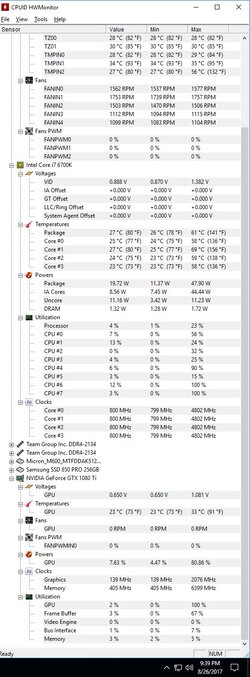- Joined
- Jul 26, 2004
you could try the shunt mod , I havent really benched my 1080 but I can see this mod in my future so I can get the 1.09v on a reg basis
Welcome to Overclockers Forums! Join us to reply in threads, receive reduced ads, and to customize your site experience!
But what determines that is what I'm wondering. If it's not power or heat, what stops it from going higher?
I'm happy with it right now at +150 on the core clock and +500 on the memory. That seems to be the best gain in fps. I can go to +600 on the memory and +160 on the core clock and still be stable, but for some reason my fps are actually lower (and about 100 points down in TimeSpy).
It's mostly a curiosity thing, I like to tinker with everything and see what the limits are and what causes them to hit the limits. I'd love to push the card further just to see how far it goes if I can find out what the limiting factor is, but at the end of the day I'll stick with my +150/500 settings for gaming.
I don't know what card do you have but once you set higher voltage then the card hits power limit and won't OC any higher. This is why people make these shunt mods. Personally I don't like liquid metal and for gaming it's not worth to use this mod. Some BIOS versions have removed power limits but I don't know how it really works as I had no time to test it.
Higher voltage helps till some point but later to set higher clock, cards need higher power limit or will throttle to the same lower values. Anyway 2088MHz boost on 1.075V is good result. Many cards won't boost past 2012MHz.
